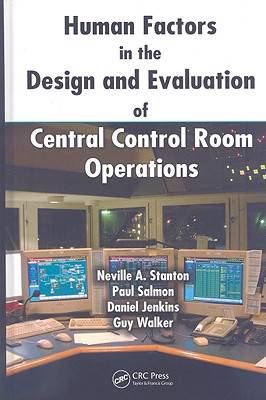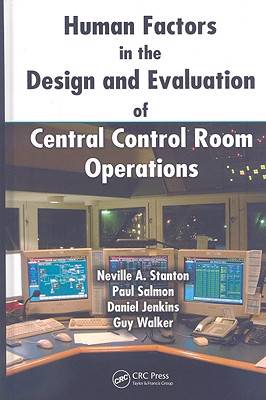
- Retrait gratuit dans votre magasin Club
- 7.000.000 titres dans notre catalogue
- Payer en toute sécurité
- Toujours un magasin près de chez vous
- Retrait gratuit dans votre magasin Club
- 7.000.000 titres dans notre catalogue
- Payer en toute sécurité
- Toujours un magasin près de chez vous
Human Factors in the Design and Evaluation of Central Control Room Operations
Neville A Stanton, Paul Salmon, Daniel Jenkins, Guy WalkerDescription
Whether used for aviation, manufacturing, oil and gas extraction, energy distribution, nuclear or fossil fuel power generation, surveillance or security, all control rooms share two common features. The people operating them are often remote from the processes that they are monitoring and controlling and the operations work 24/7. The twin demands of remote and continuous operation place special considerations on the design of central control rooms. Human Factors in the Design and Evaluation of Central Control Room Operations provides an analysis of Human Factors and Ergonomics in this complex area and the implications for control room staff. This information contained within this book can then be used to design, assessed and evaluate control rooms.
Taking an integrated approach to Human Factors and Ergonomics in the control room environment, the book presents fourteen human factors topics: competencies, training, procedures, communications, workload, automation, supervision, shift patterns, control room layout, SCADA interfaces, alarms, control room environment, human error, and safety culture. Although there are many resources available on each of these topics, this book the information together under one cover with a focus on central control room operations. Each chapter is self-contained and can be read in any order, as the information is required.
Spécifications
Parties prenantes
- Auteur(s) :
- Editeur:
Contenu
- Nombre de pages :
- 446
- Langue:
- Anglais
Caractéristiques
- EAN:
- 9781439809914
- Date de parution :
- 01-12-09
- Format:
- Livre relié
- Format numérique:
- Genaaid
- Dimensions :
- 163 mm x 236 mm
- Poids :
- 771 g







